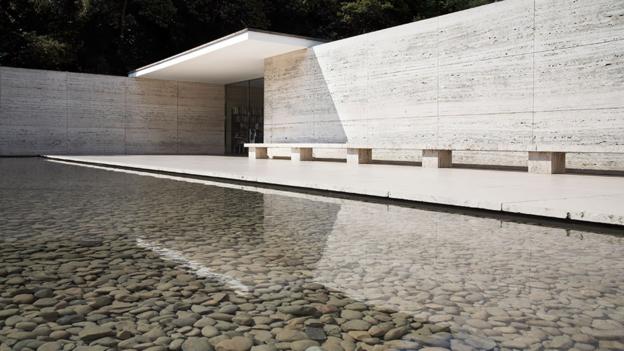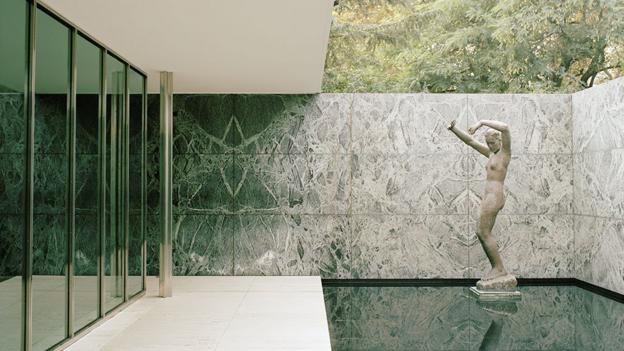In 1929 Rothko began teaching children at the Center Academy of the Brooklyn Jewish Center, a position he retained for more than 20 years. In the 1930s Rothko painted mostly street scenes and interiors with figures. Rejecting conventional modes of representation, he stressed an emotional approach to the subject--an approach he admired in children's art--and adopted a style characterized by deliberate deformations and a crude application of paint.
Early in his career, Rothko was encouraged by the artist Max Weber (with whom he briefly studied at the Art Students League in New York in the mid-1920s) to work in a figurative style reminiscent of Cézanne. Rothko’s early work resembles nothing of the style for which he is renowned.
#Rothko #ArtAtoZhttp://1.usa.gov/1UcRtZ2 Untitled (three nudes)
Untitled (three nudes)Mark Rothko
WWW.NGA.GOV
National Gallery of Art In the late 1920s, Rothko met the modernist painter Milton Avery (1885-1965), whose simplified and colorful depictions of domestic subjects had a profound influence on Rothko's early development, particularly his application of paint and treatment of color. Avery's home became a meeting place for artists, who attended weekly life drawing sessions there. Rothko was in regular attendance. This is a profile portrait of Rothko, smoking a pipe, by Avery. The informality of the image speaks to the close friendship and mutual respect and admiration shared by the two artists.
#Rothko #ArtAtoZMilton Avery, "Rothko with Pipe," 1936, drypoint, brown-black ink on woven paper, National Gallery of Art, Ailsa Mellon Bruce Fund
參考翻譯In 1929 Rothko began teaching children at the Center Academy of the Brooklyn Jewish Center, a position he retained for more than 20 years. In the 1930s Rothko painted mostly street scenes and interiors with figures. Rejecting conventional modes of representation, he stressed an emotional approach to the subject--an approach he admired in children's art--and adopted a style characterized by deliberate deformations and a crude application of paint.
#Rothko #ArtAtoZhttp://1.usa.gov/1MUdm9N參考翻譯 Street Scene
Street SceneMark Rothko
1.USA.GOV
 Yale University Press
Yale University Press For you Rothko fans out there.
 How Marcus Rothkowitz Became Mark Rothko | Yale Press Log
How Marcus Rothkowitz Became Mark Rothko | Yale Press LogAnnie Cohen-Solal offers a detailed portrait of Mark Rothko, born Marcus...
BLOG.YUPNET.ORG
Kimbell Art Museum We continue our “Masters Sculptors and Painters” film series this Sunday at 2 p.m. in the Kahn Auditorium with the free screening of “Rothko’s Rooms,” which chronicles the life and work of American abstract artist Mark Rothko.

Where would you hang your
#Rothko? Check out our @TateShop custom prints
http://ow.ly/HYodW MoMA The Museum of Modern Art
MoMA The Museum of Modern Art On the final night of Hanukkah, wishing you peace and blessings.
http://bit.ly/1wEeYNB[Mark Rothko. "No. 10." 1950]


(Alfredo Aldai/epa/Corbis)
What does a Rothko sound like?
By Robert Cottrell
From
The Browser
*****It
has been a deliberately slow, painstaking process, but 18 months after
Mark Rothko's Black on Maroon was vandalised with quick drying and
theoretically indelible graffiti ink Tate Modern has revealed the
successful results of one of its most difficult restoration projects
Team of experts took 18 months to remove ink on vandalised works and restore 1958 canvas Black on Maroon
The Guardian|由 Mark Brown 上傳
此節目引用引多 Rothko 自己的情境說法. 很好.
還提及著名的紐約Seagram大樓內的2.5百萬美元之"壁畫"受米開蘭基羅的影響
Rothko最佩服 林布蘭和Turner.....
2006
The Power of Art - Rothko
http://www.youtube.com/watch?v=pUMqFaP1wcg
Simon Schama's J.M.W. Turner / Turner began his ca...
2005/12/31之作
失根記。場所的光華。 《羅斯科傳》
James Breslin 著《羅斯科傳》張心龍 冷步梅 合譯,台北:遠流出版社,1997
James Breslin, Mark Rothko, A Biography (Chicago: University of Chicago Press,
1993),
中文本計 608頁。如果翻譯加注(無,不過,它附原文,方便自己動手查),可能要再加 50頁。有人名和其主要作品之索引,更方便的是Amazon 網站可以全文索引,譬如說,中文索引不收的Barnes (費城外著名的美術藏品基金會;姓)等等。遠流出版社網站有些資料如目錄、「精彩內容」等等。
原書或許是版權關係,重要作品「斯格蘭大廈的壁畫」之圖,並沒將之收入 —不過這在網路上可以找到。本書(中文)未標作品尺寸。
由於可能討論的主題相當多,我舉些方便的例子。
我認為引 Simone Weil之言:To be rooted is perhaps the most important and least recognized need of the human soul.
或許可以說明我將他一生點明為:(一生為)失根記。(創作增進)場所的光華。
超越也者,移植也者,異世界之闡釋: Rothko 喜歡前置詞 trans- 的字眼:transcend(這字本書用得相當多) 和 translate 和 transplant 等等( p.23, Dore Ashton noticed Rothko's fondness for words that have the prefix "trans," words like "transcend," or "translate," or "transplant."66 In Latin, the preposition "trans" means "across, to or on the farther side of, beyond, over." The English prefix suggests ..." )
我認為將 a place 翻譯成「空間」不好。
"... projects he began to produce in 1958, Rothko could fill the walls of a room with such works, he would transplant himself (and others) into an environment where he did feel at home. "I have made a place." "
作品前我們面對的是孤絕、空虛、失落。 ……用作品來填滿房間的牆壁。
把自己和別人移值到他覺得舒適的環境。「我製造一空間」。
wall of light 似非"牆面上的光 "
Since by the end of the decade Rothko would be creating what have aptly been called "walls of light" whose declared purpose was the embodiment of tragic emotion, those remarks are very significant. ( p.359, 注13)
( 注13.) This expression was coined by Hubert Crehan in "Rothko's Wall of Light: Exhibition at Art Institute of Chicago," Arts Digest, Nov. 1, 1954, p. 19.
*****
「休斯頓教堂」一章,現在多稱為「羅斯科小教堂」( The Rothho Chapel)。
作者十幾年前去參觀之描述:
"... you to a foyer, with a desk along the opposite wall, where you can buy postcards, slides, copies of Susan Barnes's The Rothho Chapel, An Act of Faith, or, on the way out, you can inscribe your thoughts about the chapel ..."
比較有趣的提到 The Rothho Chapel, An Act of Faith這本書。
這 An Act of Faith 是西方的專名,值得有心的人沉思。
(faith:喩(1)信德;信仰;信條;信理;信奉:指人答覆天主愛的邀請,讓祂作心中的主人,並願意按照祂的旨意行事;拉丁文為 fides;是天主所賜三超德之一,其它二德是望德 hope、愛德 charity。(2)信心;信任。
faith, act of:(1)信心行為;啟發信德。(2)信德頌:習用祈禱文之一。)
act of faith
Behavior that shows or tests a person's religious or other convictions, as in Rock climbing with a new, inexperienced partner was a real act of faith. The term is a translation of the Portuguese auto da fé, which referred to the sentencing and execution of heretics (often by burning at the stake) during the Inquisition, when punishing heresy was thought to constitute an assertion of faith. In modern times it is used for more benign circumstances. [Early 1700s]
au·to-da-fé n., pl. au·tos-da-fé
Public announcement of the sentences imposed by the Inquisition. /The public execution of those sentences by secular authorities, especially by burning at the stake.
[Portuguese auto da fé : auto, act + da, of the + fé, faith.]
其他還有書名 False Security (p.188 )是雙關語,我們可以了解美國在1920-30年代在證券市場和消費者研究等都很澎拜。
其他還有許多地名,如,『聖經中的犧牲以撒處』、紐約的
Horn & Hardart(
is a company that came to prominence as the proprietors of the first automat in New York City. Au·to·mat 1903 A trademark used for automated restaurant services in which food is dispensed from vending machines. )等等 都可以更深入了解。

































